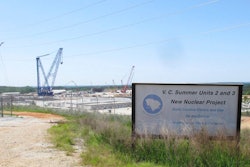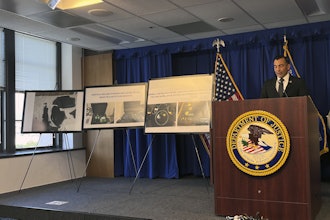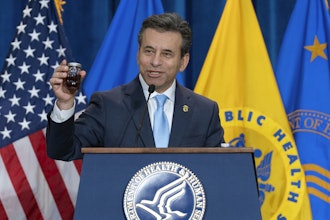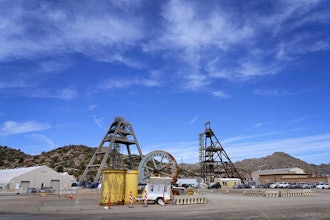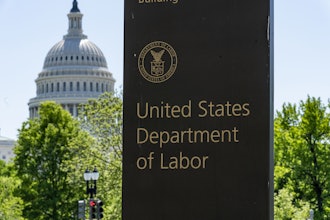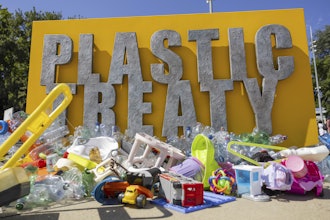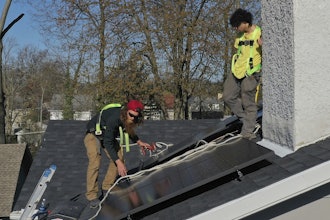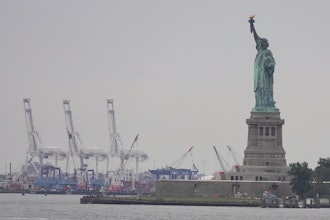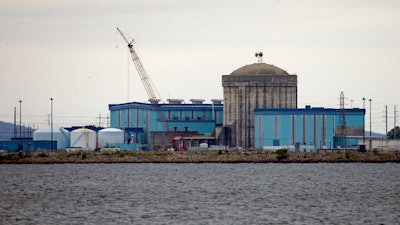
COLUMBIA, S.C. (AP) — A decade ago, utilities were persuading politicians around the country to let them spend big to go nuclear.
Expanding nuclear energy capacity was a sure bet, they said: Natural gas prices were rising, energy needs skyrocketing, and the federal government was poised to cripple carbon-emitting fossil fuel plants. With a dozen or more nuclear power projects being developed around the nation, cost savings could be found through simultaneous construction.
State legislators were sold. In South Carolina, they even passed a law allowing utilities to charge customers up front and to recoup their investments even if the projects never produced a kilowatt. Several other Southern states also passed "pay-as-you-go" laws.
This week, having spent more than $10 billion, executives with South Carolina Electric & Gas and Santee Cooper acknowledged that all their assumptions were wrong.
Worse still: Consumers may have to pay billions more on the rusting remains of two partially-built reactors at the V.C. Summer Nuclear Station north of Columbia.
"When we started, there was talk of a nuclear renaissance restarting a whole industry in the U.S.," said Santee Cooper's chief financial officer, Jeff Armfield. He was among several executives recommending the project be abandoned. The board of the state-owned utility unanimously agreed at a public meeting Monday.
Most of the 18 nuclear projects pending before the Nuclear Regulatory Commission a decade ago have been aborted or suspended indefinitely. None of the 7 projects the NRC licensed are operational. Only one is still being built, in Georgia, at a cost of $100 million a month. Southern Company financial documents filed Wednesday say the project, slated to cost $14 billion, could cost $25 billion or more if completed.
The projects in South Carolina and Georgia were already years behind schedule and billions over budget when their shared lead contractor, Westinghouse, declared bankruptcy in March to get out of fixed-price contracts aimed at controlling escalating costs. South Carolina executives say they were forced to give up after estimated costs, budgeted at $11 billion in 2008, soared beyond $20 billion.
"So much money has been wasted. That money could've been put in alternative energy and solar across our state, but it's lost now and ratepayers are going to feel the brunt of this," said Tom Clements, with Friends of the Earth. "The ratepayers are losers any way you look at it. Now we have to take a different tactic."
Utility executives also promised that charging customers along the way would save hundreds of millions in interest fees, and any rate increases would be small and incremental. Instead, the project accounts for 18 percent of SCE&G's residential electric bills and more than 8 percent of Santee Cooper's. Neither company plans to refund this money, and SCE&G now wants permission to recover $5 billion over 60 years.
Abandoning reactors 2 and 3 at V.C. Summer also could impact Duke Energy, which has spent $500 million on a potential nuclear expansion in Gaffney, South Carolina — costs it says it has not passed on to customers through rate hikes. Duke Energy customers in Florida have already repaid the utility $870 million of the $1.1 billion it has spent on a proposed nuclear station there. The company hasn't decided whether to proceed with either project, spokesman Ryan Mosier said.
One executive says nuclear energy won't exist without federal help.
"If the federal government wants there to be a nuclear energy sector in this country, they need to step forward and make sure these projects are finished," said Santee Cooper CEO Lonnie Carter. "If they don't, we won't have one. As time goes on, units will retire and we'll have less and less nuclear energy."
Currently, 99 nuclear reactors across 30 states produce about 20 percent of the nation's power. The oldest began operating in 1970 in upstate New York and is licensed to continue through 2029. Several others have shut down in recent years before their licenses expired, due to economic and environmental pressures.
In Virginia, Dominion Energy spent $600 million to expand its North Anna nuclear plant and received its license in May, but "the economics at this time don't support moving forward," Mark Webb, a Dominion executive, said this week.
"In the U.S., the outlook for new nuclear is bleak right now," partly due to flat demand — caused in part by energy efficiencies such as LED lighting — and cheap natural gas, said Jason Bordoff, who directs Columbia University's Center on Global Energy Policy.
South Carolina utility executives said natural gas can supply future power needs, and Santee Cooper could bring a coal-burning unit it idled this year back online.
That "makes me sad and angry," said Michael Shellenberger, president of Environmental Progress, which advocates for nuclear power as a way to reduce greenhouse gases. "A coal plant? Really? Every time you don't build a nuclear plant, you're burning fossil fuels."
Renewables such as solar and wind are getting cheaper, but the growing industry still represents a fraction of the nation's electricity production, Bordoff said.
"If policymakers get more serious about climate change, they will need nuclear to play a role," he said.
Clement wants a broader look at conservation and renewable energy, just as he argued a decade ago.
South Carolina's new, bipartisan Energy Caucus said it will consider diverse options.
"No one anticipated what kind of a catastrophe this would turn into," said Senate Minority Leader Nikki Setzler, a co-sponsor of the 2007 law.





